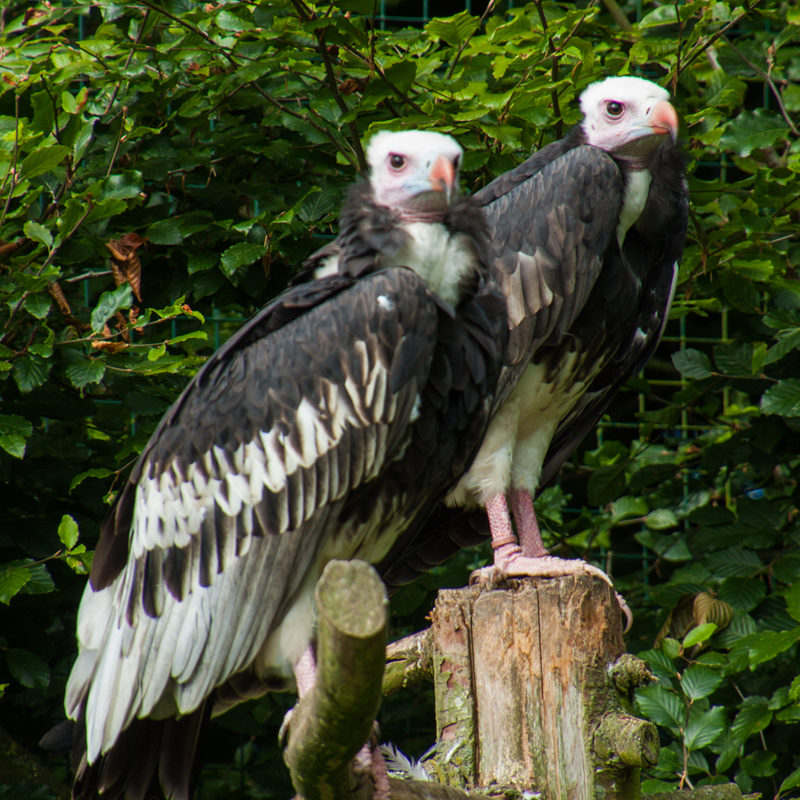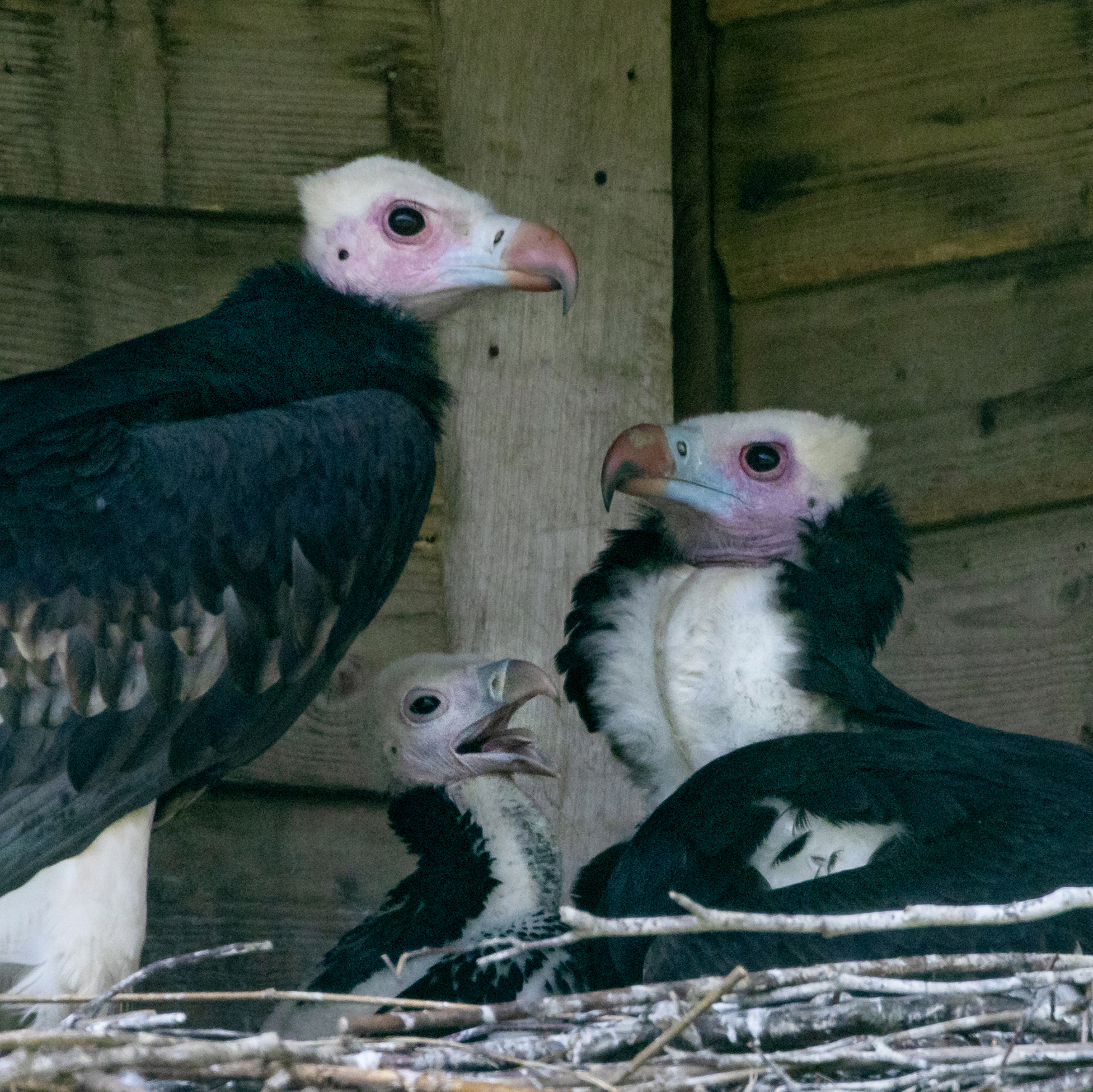
Bird Team member Jennie Marshall is currently undertaking the Level 3 Zookeeper and Aquarist Apprenticeship, and is now in her second year! Jennie is learning about a range of topics on her apprenticeship, and not just about birds of prey. From legislation to training, to conservation and the roles of zoo and aquarium collections. We caught up with her to hear a little more about what she’s been up to recently…
“One of my modules involves studying the behaviour of the birds in our care, monitoring for their health and behaviour to ensure they have the best welfare possible. To do this, I have been carrying out ethograms, which is a model of recording types of behaviour at regular intervals over a set period of time.


I have mainly been working with Angus and Satara on this – one of our breeding pairs of White-headed Vultures. Since the destruction of their aviary due to Storm Eunice in 2022, the pair have been living behind-the-scenes in an off-show aviary in a quieter part of the grounds. To help them become settle in to their new surroundings and keep their clever minds active, we have been providing them with lots of activities, known as ‘enrichment’ activities. As part of the course, I carried out ethograms both with and without the enrichment in their aviary so we could compare to see if they interacted with it and how their behaviour changes.
Tasked with creating this enrichment, I wanted to create a device that would help them to display the natural behaviour that they would have if in the wild. With the help of our Head of Conservation, Research and Education, Dr Campbell Murn, I explored what these vultures would spend their time and energy on in the wild, and why.
Although White-headed Vultures have not been widely studied so there is limited information about them, we do know that this species spend a lot of their time in the wild resting and conserving their energy. However, this species of vulture is one of the only species recorded to show predatory behaviour, actually perusing and hunting their prey on occasion in a collaborative way and not just purely scavenging from carcasses. I wanted to see if I could recreate their collaborative behaviour with a device that encouraged Angus and Satara to work together.
I built a device that hid a nice piece of their dinner underneath a static stick pile, hoping they would work together to remove the sticks from the puzzle to get their food. This would replicate their natural exploratory behaviour too – something seen when they feed on carcass to remove body parts and sometimes stick their head inside to get to hard-to-reach pieces!
When the time came to see what Angus and Satara thought of my invention, I carried out five ethograms with them, during different times of the day and in different weather conditions to gather as much information as possible. After placing the device in their aviary, I began recording their behaviour.
At first, they were both a bit unsure of what to make of it! Satara was first to come down from her perches to give this box a close-up inspection. She managed to work alone to solve the puzzle and move the sticks, however Angus saw an opportunity and then came down to eat the dinner! Satara, being the most confident of the pair, wasn’t going to let him get away with that, and in the end figured out it was easier to take the food back from Angus, which is what she did!
We’re always working hard behind the scenes to make sure that they are as fit and healthy as they can be – and enrichment activities for them really help us with this. Whether is a puzzle box to keep their minds active, a new way of feeding them, or even just a new feature of their aviary, investigating a new object or working out a new device means they are keeping their minds and body active.”